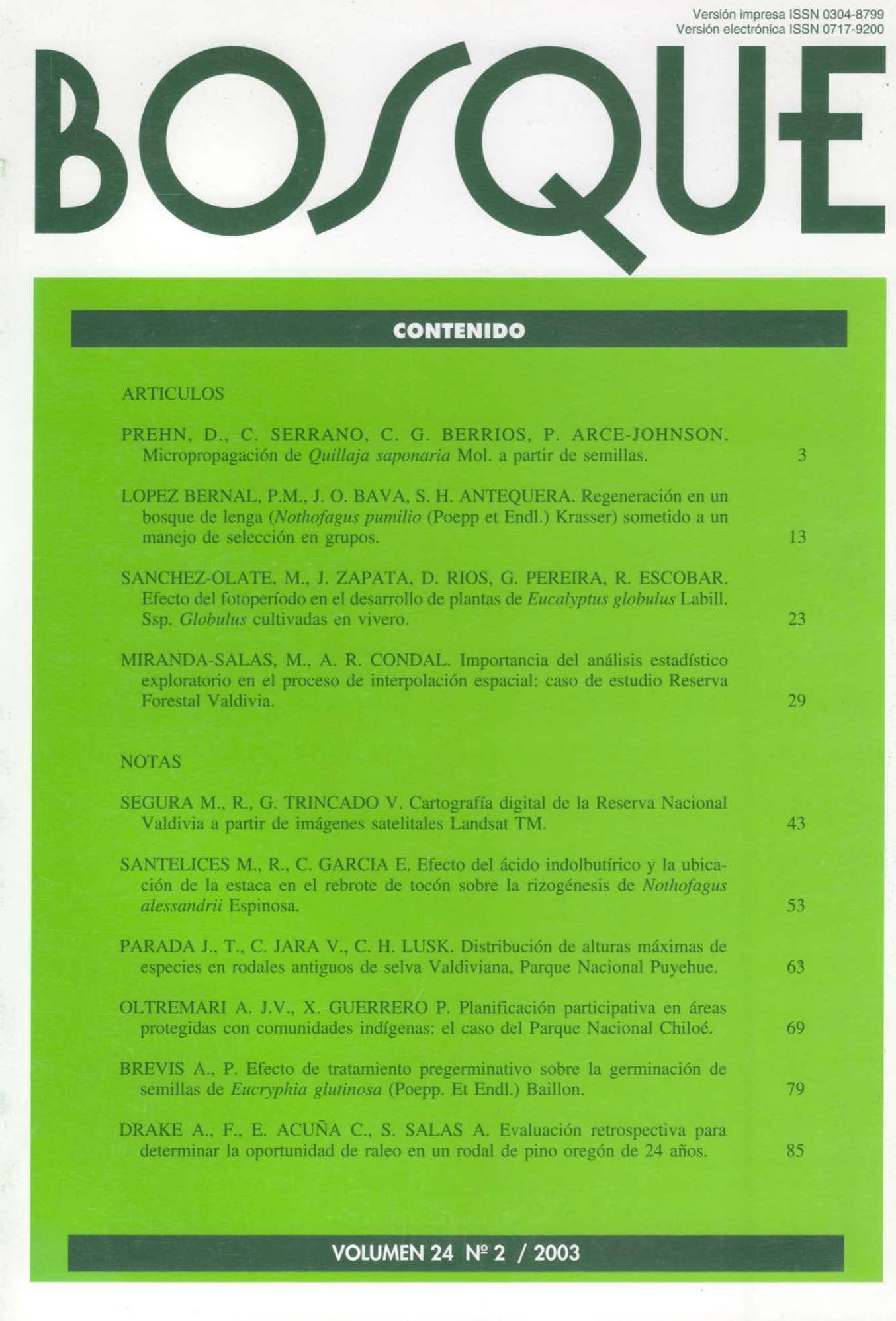Main Article Content
Aug 29, 2003
Abstract
The rooting capacity of stem cuttings of Nothofagus alessandrii Espinosa was studied. Stem cuttings were collected from stump sprouts in November 1996, 1997, 1998 and 1999 near the Los Ruiles National Reserve in the Cauquenes province, Maule region, in Chile. The vegetative material collected was treated as independent trials with the use of a factorial experiment for the four different years. The effect of stem position (apical, middle or basal) and different concentrations of indolebutyric acid (IBA) (0, 0.50%, 1.00% and 2.00% in 1996, and 0.25%, 0.50%, 0.75% and 1.00% in 1997, 1998 and 1999) were evaluated based on the rooting capacity of N.alessandrii. The trials were carried out in a plastic covered greenhouse located at the forest nursery of the Universidad Católica del Maule in Talca. The greenhouse was equipped with a mist system and bottom heating, which maintained a constant temperature of about 21 °C at the base of the stem cuttings. The substrate used was germ-free sawdust of Pinus radiata D, and each trial was kept under observation for three months. Results indicated that N. alessandrii could be propagated using stem cuttings from stump sprouts. However, rooting was not constant and the rooting capacity could be determined based on the parent tree. With apical cuttings and 0.75% indolebutyric acid, 20% rooting capacity was obtained with an average of 11 roots of 2.4 cm in length.


